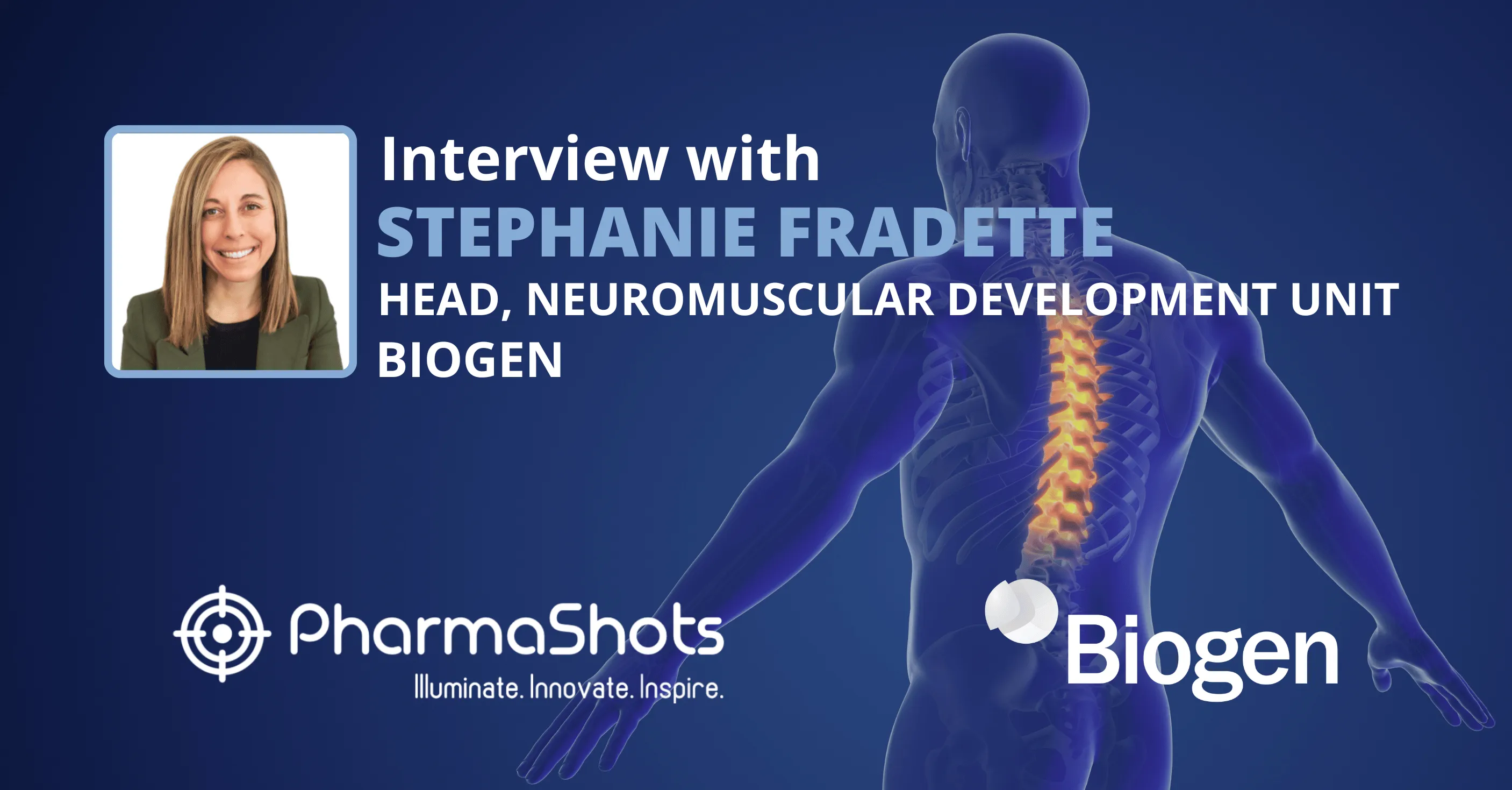
Brian Ingram, Director, Discovery & Translational Sciences at Metabolon Shares his Views on the Expansion of its Inflammation Portfolio
Shots:
- Brian briefed our readers about Metabolon’s inflammation portfolio expansion with the launch of new Targeted Panels studying cannabinoids, sphingolipids, and lipid mediators of inflammation including its Oxysterols Targeted Panel
- He also talked about Endocannabinoids and Sphingolipids and how Metabolon targeted panels are used for their measurements
- The interview highlights how Metabolon’s mission to deliver biochemical data and insights that expand and hasten the impact of life sciences research
Smriti: Please brief about Metabolon’s Inflammation Portfolio.
Brian Ingram: Metabolon’s Inflammation Portfolio consists of four recently launched targeted panels, including Lipid Mediators of Inflammation, Oxysterols, Sphingolipids, and Cannabinoids.
These panels were developed with the objective of measuring metabolite classes with well-established roles in mediating and resolving both acute and chronic inflammatory responses. Notably, metabolites in these classes can be difficult to measure due to their concentration and stability, thus highly sensitive methods are needed. Each of the panels in Metabolon’s inflammation portfolio functions as a targeted assay with enhanced sensitivity, whereby the absolute concentrations of the metabolites can be determined.
These panels are also distinct from many of the other assays commonly used to measure inflammation, such as those involving the measurement of specific proteins like cytokines. Ultimately, however, we believe the insight gained from these panels will be complementary to that obtained from other existing approaches.
Smriti: Can you please give some details about the Oxysterols Targeted Panel of the company?
Brian Ingram: Metabolon’s Oxysterols Targeted Panel measures cholesterol, cholesterol precursors, and several related oxidized derivatives. The panel targets 12 metabolites in total, including Cholesterol, Desmosterol, Lanosterol, Lathosterol, 24-Hydroxycholesterol, 27-Hydroxycholesterol, 4β-Hydroxycholesterol, 5α,6α-Epoxycholesterol,
5α,6β-Dihydroxycholestanol, 7-Dehydrocholesterol, 7α, 27-Dihydroxycholesterol, and 8-Dehydrocholesterol.
Assessment of oxysterols is of high biological interest as they can be formed non-enzymatically, such as from reactive oxygen species, which makes oxysterols a biomarker for oxidative stress, or they can be formed enzymatically, such as from cytochrome P450 (CYP) enzymes. Notably, enzymatic oxysterol production is important for the generation of key metabolites, such as vitamin D and bile acids. Because they can be formed both enzymatically and non-enzymatically, accurate quantification of oxysterols can be both analytically challenging and technically demanding. Thus, a major strength of Metabolon’s Oxysterols Targeted Panel relates to the fact that it has been validated for accurate quantitation of the 12 species referenced above.
In the context of inflammation, it is known that some inflammatory and immune responses are influenced by oxysterols. For example, oxysterols have been shown to influence the initiation and progression of atherosclerotic plaques. Further, they have been shown to accumulate in several diseases associated with chronic inflammation (e.g., atherosclerosis, neurodegenerative disease, inflammatory bowel disease, etc.). As such, oxysterols have the potential to function as biomarkers for monitoring disease progression. In sum, Metabolon’s Oxysterols Targeted Panel can be regarded as a platform to enable a better understanding of cholesterol homeostasis and its relation to disease phenotypes.
Smriti: What are Endocannabinoids? Shed some light on the Metabolon’s Cannabinoid Targeted Panel.
Brian Ingram: Generally speaking, endocannabinoids can be defined as endogenous lipids species that bind cannabinoid receptors (CB1 and CB2). Importantly, these receptors mediate a wide range of physiological processes including those related to nociception, inflammation, appetite, mood, memory, immune function, and locomotion, and thus are of high biological interest.
With respect to specifics, anandamide (arachidonyl ethanolamide) and 2-arachidonoyl glycerol are the best-known examples of endocannabinoids, though there are several other related metabolites that can influence endocannabinoid signaling. This includes other endogenous metabolites such as N-acyl ethanolamines (NAEs) (e.g., linoleoyl ethanolamide) along with other metabolites derived from arachidonic acid and neurotransmitters (e.g., arachidonoyl glycine, arachidonoyl serotonin, N-acyl dopamines).
Notably, the cannabinoid receptors are also the targets of several phytocannabinoids as well. Phytocannabinoids, in contrast to endocannabinoids, are plant-derived compounds that can serve as exogenous ligands for the endocannabinoid system. These are derived primarily from exposure to marijuana (Cannabis sativa) and are of biological interest due to their therapeutic potential for the treatment of pain, inflammation, and other ailments.
Metabolon’s Cannabinoids Targeted Panel is comprehensive in that it targets both endogenous as well as exogenous ligands of the cannabinoid receptors. The three classes of cannabinoids measured on Metabolon’s Cannabinoids Targeted Panel include endocannabinoids and related molecules (anandamide, 2-arachidonoyl glycerol, N-acyl ethanolamines, N-acyl dopamines, etc.), phytocannabinoids (cannabigerols, tetrahydrocannabinols, cannabidiols, etc.) and human metabolites of phytocannabinoids. Collectively, assessment of the metabolites on this panel should provide significant insights into the role of cannabinoid receptor signaling and disease. Since phytocannabinoids are also measured, the panel can also be leveraged to assess compliance in studies involving therapeutic administration of phytocannabinoids.
Smriti: Shed some light on the Sphingolipids Targeted Panel of Metabolon.
Brian Ingram: There are five classes of sphingolipids measured on Metabolon’s Sphingolipids Targeted Panel. This includes dihydroceramides, ceramides, hexosylceramides, lactosylceramides, and sphingomyelin. The metabolites in these classes are of interest as they are known to play a role in regulating multiple biological processes, including that related to cell growth, proliferation, migration, and apoptosis. Their cell signaling properties have also been implicated in several diseases of inflammatory origin, including cardiovascular disease, neurodegenerative disease, cancer, and diabetes.
Notably, within each sphingolipid class, there can be significant variation with respect to what fatty acid is attached to the sphingoid base of the sphingolipids. Moreover, this structural variation can have implications with respect to biological phenotypes. As a case in point, it has been established that the ratios of circulating ceramides (e.g., (d18:1/16:0)/(d18:1/24:0)) can function as predictive biomarkers for various cardiovascular disease outcomes. Thus, having the granularity associated with measuring distinct sphingolipid species can be quite important from a biological perspective.
To this point, one of the major strengths of Metabolon’s Sphingolipids Targeted Panel is that it is optimized to capture as much of this variation as possible. Specifically, a total of 61 species are targeted, with 12 species being assessed for most classes. As a fully quantitative panel, comparisons between different sphingolipid species can be made which should significantly expand the possibilities for biomarker identification and advance the understanding of sphingolipids and their role in disease.
Smriti: Discuss the characteristics of the Lipid Mediators of Inflammation Targeted Panel.
Brian Ingram: Lipid mediators of inflammation can be regarded as bioactive lipids that have pro-inflammatory activities, which act at the beginning of the inflammation process, or anti-inflammatory activities, which function at the end of the inflammation process. They are derived from dietary omega 3 and omega 6 polyunsaturated fatty acids via the action of lipoxygenases (LOX), cytochrome P450s (CYP), and cyclooxygenases (COX) enzymes.
In total, Metabolon’s Lipid Mediators of Inflammation Targeted Panel measures lipid species across 7 metabolite classes. This includes important fatty acid precursors such as arachidonate as well as oxidized fatty acid intermediates and bioactive lipid mediators with well-established pro- and anti-inflammatory properties (e.g., leukotrienes, prostaglandins, thromboxanes, lipoxins, maresins, protectins, resolvins, etc.).
Given their involvement in both promoting and resolving inflammation, the analytes targeted in Metabolon’s Lipid Mediators of Inflammation panel are expected to have wide applicability in terms of use and can potentially be leveraged for any study where inflammation is a phenotype of interest. This would include, for example, studies involving injuries and wound healing, infection, health and wellness, stress, and/or any diseases associated with chronic inflammation.
Smriti: How will the data of these panels help the researchers create a current-state functional readout of an individual?
Brian Ingram: We believe that the assessment of the small molecules in each of these panels can help with understanding disease phenotypes as many of these analytes function as bioactive metabolites, meaning that they directly play roles in mediating and/or influencing biological phenotypes. As with most other small molecules, they also serve as the functional readout for a number of upstream influences including genetics, lifestyle, and the microbiome, among many others factors. Analysis of the data alone or after integration with other complementary data streams should thus help with efforts aimed at advancing biomarker identification, diagnosis and monitoring of disease, and the development of new treatment paradigms.
Smriti: Lastly, would you like to mention any other metabolomics solution that the company is planning to launch in near future?
Brian Ingram: We recently announced the launch of our Glucose Portfolio, consisting of four specific products, including Diabetes Research Markers Targeted Panel, Impaired Glucose Tolerance Targeted Panel, Insulin Resistance Targeted Panel, and Salivary Glucose Single Analyte Assay. Each measures the metabolomic aspects of glucose tolerance and insulin resistance and offers a comprehensive characterization of what occurs at a cellular level to drive glucose metabolism, which has implications for diabetes, heart disease, and neuropathy.
Image source: Canva
About the Author:

Brian is the Director, Discovery and Translational Sciences at Metabolon. He currently leads a team of PhD-level scientists that function as the primary scientific and technical liaisons for Metabolon’s academic and government clients. He is a diversely trained biologist with expertise in metabolomics, lipid biochemistry, and microbiology. He received his Ph.D. in Biochemistry from Duke University and continued his scientific training as a Postdoctoral Associate at the University of North Carolina Chapel Hill.
Related Post: Jason Winnike, Study Director at Metabolon Shares Insights from the Launch of its Oxysterol Targeted Panel
Tags

Senior Editor at PharmaShots. She is curious and very passionate about recent updates and developments in the life sciences industry. She covers Biopharma, MedTech, and Digital health segments along with different reports at PharmaShots.














